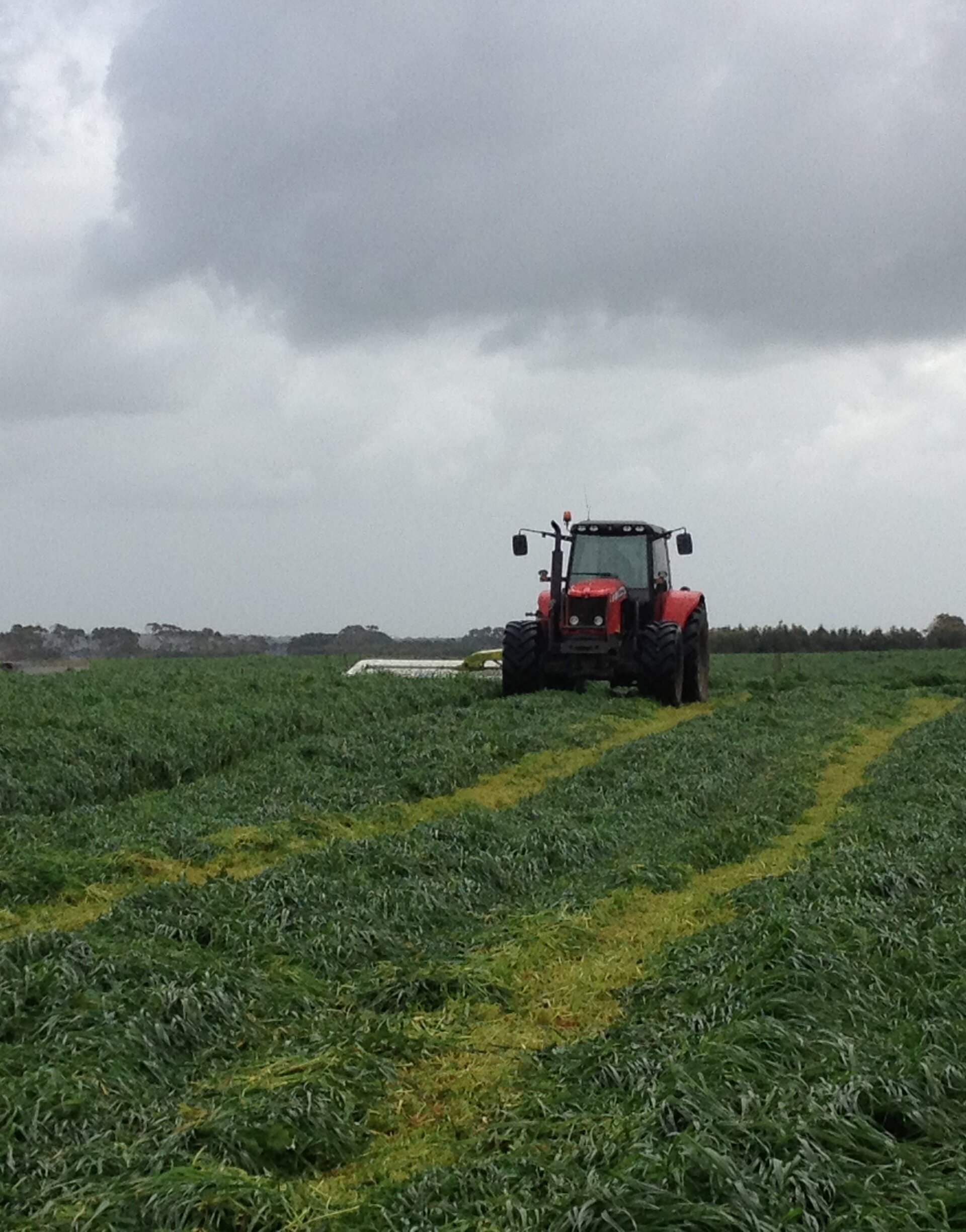With wet weather conditions around delaying silage harvest Peter Notman discusses silage tips and why it is important now more than ever to use a 1174 (bale silage) or 11G22 (pit silage) inoculants.
So now really is the time to focus on how to make the best possible silage from what is available in the paddocks. With on the most part wetter crops, they’ll need more lactic acid to bring down the pH to create stable, palatable silage.
The risk of soil contamination is also higher in these conditions which further increases the risk of spoiled silage.
THE SILAGE DILEMMA
- The impact of the wet weather on this harvest season has been more significant than years gone by, but maybe similar to 2021 in southern Victoria.
- Silage quality is likely to be poor at the next cut
- Low energy and protein contents
- Stocks of good quality silage are expected to run low into 2023
- Cereal whole crops for hay are looking particularly challenged and likely to be low yielding in northern Victorian and southern NSW
- This is contributed to by the flooding in various parts which will probably see the costs of ‘bought-in’ feeds increase even further.
GET YOUR SILAGE BETTER – OUR TIPS
AIM FOR A CLEAR CUT
- Avoid the base of the sward if it is full of dead and unwanted slimy material
- Aim for a clean cut of good grass (at the expense of yield…see below)
- Adapt the cutting height to avoid this material
- Poorer undergrowth if sitting in wet conditions is likely to be of poor nutrient and microbiological quality
- Raising heights can reduce the risks of contaminating yeasts & moulds
- This will improve the fermentation and the nutrient quality, but at the expense of yield.
- Ensure you use an 1174 or 11G22 to create more stable, palatable silage
RAISE THE CUTTING HEIGHT
- Raise the cutting height so the crop is off the damp dirty ground.
- This gets air flow under the crop as well as on top.
- Also with the ground damp there’s more chance of getting dirt or manure in the crop.
FORECAST FOR RAIN?
- Try and wilt it rapidly
- Even on a dull day if the ground is free draining and dry, it could be worth spreading the crop to speed-up the wilting process. Time, but could be worth it??
- Ensile even if it is below the ideal dry matter, the nutrient content will be superior than leaving out a further few days in the hope that the rain doesn’t come and the weather improves.
BALE SILAGE
- Consider baling these areas, a preferable option to avoid risk of contaminating the entire silage clamp.
- If making wrapped baled silage NEVER stack bales on top of each other.
- Use 1174 Inoculant as it will improve silage digestibility, promote a faster, more efficient fermentation and increase dry matter recovery
- Only use 1174, as it has the multiple strains of Pioneer’s patented proprietary Lactobacillus plantarum and Enterococcus.
PIT SILAGE
- The usual correct stack making are rules apply.
- Compaction is super important & cover immediately. Need to get rid of any oxygen in the stack
- Consider newer better covering options like Oxygen Barrier, UV Cover and gravel bags.
- Use 11G22 Inoculant as it substantially decrease the growth of mould and yeast species responsible for silage spoilage. This reduces heating in the silage and minimises losses during feed-out
- Don’t use pit silage inoculant? Be aware that feed quality may drop, so testing after the pit is open is recommended. We strongly recommended a inoculant such as 11G22 versus no inoculant application.
HOW DOES SILAGE INOCULANT WORK?
- Once the air has been excluded from a silage stack, anaerobic (oxygen-hating) bacteria multiply and convert sugars to acid. This process is known as silage fermentation and the acid preserves the plant material as silage. All crops contain a range of bacteria that differ in the efficiency with which they convert sugar to acid and the type of acid they produce. The most efficient bacteria produce high levels of lactic acid. A quality silage inoculant contains crop specific strains of the most efficient lactic acid producing bacteria. These are added to the crop at harvest time to produce a high quality fermentation.
INOCULANT WE’VE GOT AVAILABLE
- 50 wet tonne and 250 wet tonne bottles
- 1174 for bale silage
- 11G22 for pit silage
Finally, while silage inoculants are designed to make good silage better – and not bad silage good, the potential gains of using a silage inoculant may be even greater when harvest conditions are less than ideal.
Get in touch with our Gippsland team
Adam Fisher
0437 512 015
adam@notmanpasture.com.au
Peter Notman
0418 512 035
peter@notmanpasture.com.au
Get in touch with Andrew Allsop
Andrew Allsop
0408 439 795
Jonathan Town
0409 118 663







